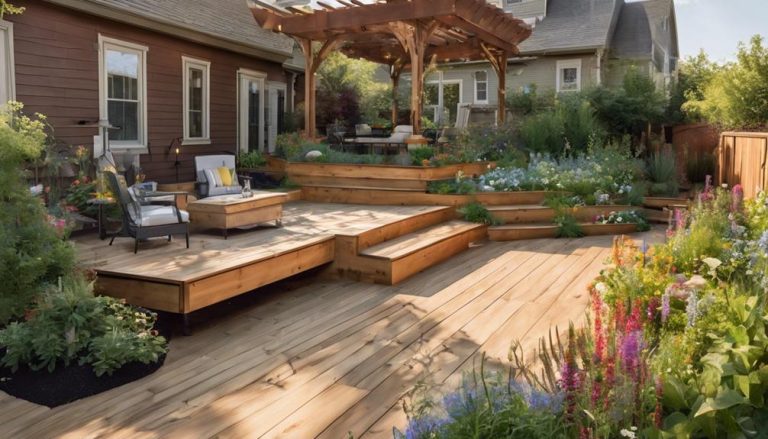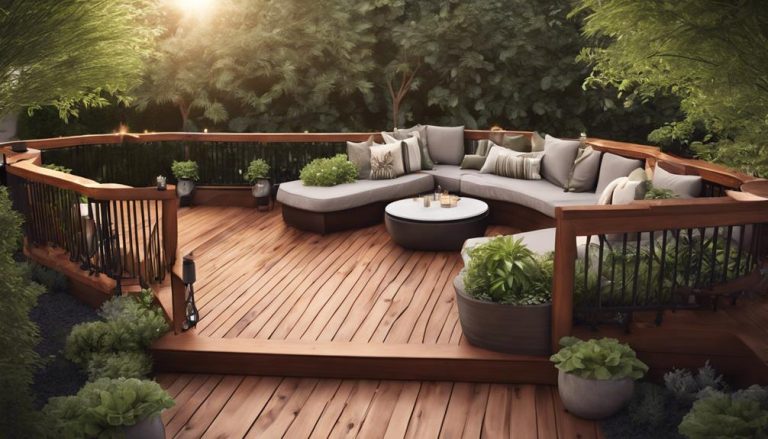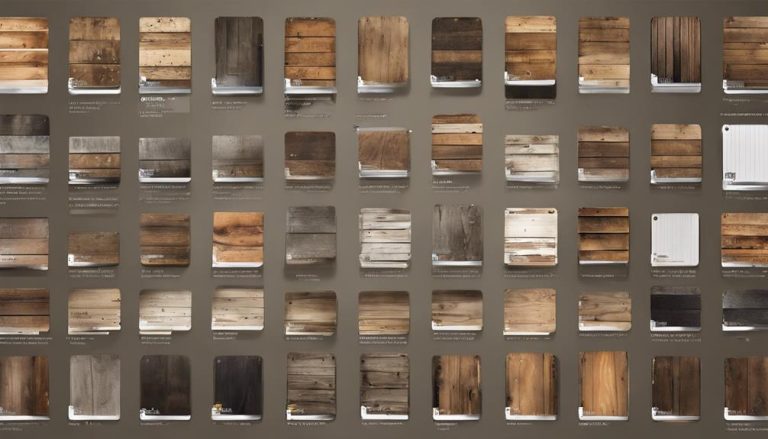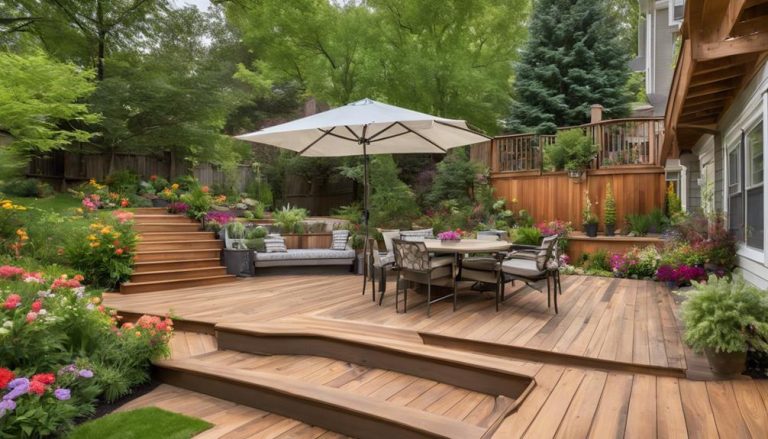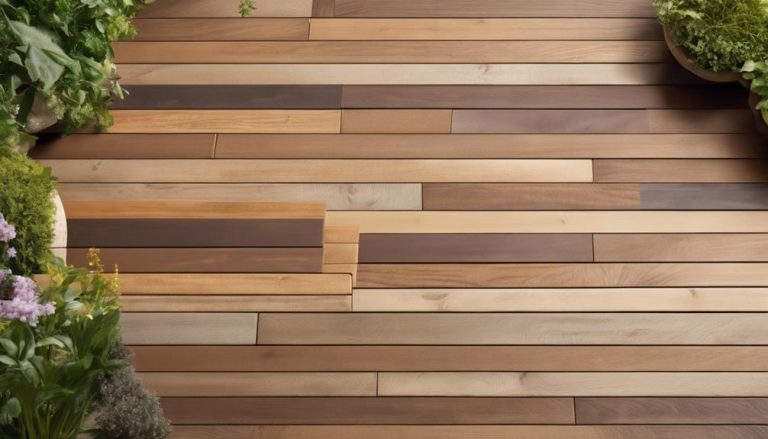Review of the Best Custom Deck Design Software
The best custom deck design software stands out with advanced 3D visualization and extensive customization options, allowing users to manipulate materials, layout, and architectural details with precision. These programs typically incorporate cost estimation tools and offer seamless integration with virtual and augmented reality platforms for enhanced project visualization. User-friendly interfaces support real-time collaboration and access to extensive libraries of templates and components, streamlining the design process. Pricing varies from free trials to premium subscriptions, catering to diverse budget requirements. With features designed for both professionals and hobbyists, this software empowers users to transform their creative visions into reality, laying the groundwork for further exploration.
Deck Builder Highlights
- Advanced 3D visualization features enable realistic project previews and interactive design updates.
- Extensive material customization options enhance aesthetic and functional control over deck designs.
- Seamless integration with external CAD/CAM tools supports comprehensive design workflows.
- Flexible pricing models, including free and trial versions, cater to different budgets and preferences.
- Cost estimation tools assist with budget management and environmental impact considerations.
Deck Design Software Overview

When selecting the best custom deck design software, it's vital to ponder key features such as 3D visualization, customization options, and ease of integration with other design tools, as these elements remarkably impact the overall user experience.
A user-friendly interface is paramount, as it ensures that both novice and experienced designers can efficiently navigate the software and access its full potential. Many designers seek software that offers attention to detail in terms of material selection, layout options, and architectural integration.
Additionally, understanding the pricing and availability across different platforms will aid in determining which software aligns best with one's budget and technical preferences.
Key Features Highlighted
Amid the growing demand for personalized outdoor spaces, deck design software emerges as an invaluable tool, streamlining the process of creating tailor-made decks. This software provides a myriad of features that cater to both professional designers and homeowners looking for precision and creativity.
Key among these features is the inclusion of 3D modeling capabilities, which allow users to visualize their projects in realistic scenarios, helping to preemptively identify design flaws or spatial constraints before construction begins.
Another critical feature is the expansive library of pre-designed templates and customizable elements, ranging from various decking materials to intricate railings and stair configurations. These resources assist in expediting the design process while ensuring adherence to aesthetic preferences and functional requirements alike. Users can also benefit from built-in cost estimation tools, which automatically calculate project expenses based on material choices and design complexities, facilitating budget management.
Moreover, integration with augmented and virtual reality platforms enhances the client's immersive experience, offering a vivid projection of the completed deck within their existing environment. Such features collectively render deck design software an indispensable asset for planning and executing exquisite outdoor spaces, balancing innovation with practicality.
User Interface Experience
Maneuvering the intricacies of deck design software necessitates an intuitive and streamlined user interface to ascertain that both professional designers and homeowners can effectively harness its robust features. A well-designed user interface serves as the visual and interactive framework through which users engage with the software, making complex tasks appear effortless.
Modern deck design applications prioritize user experience by providing straightforward navigation, allowing even novices to construct detailed layouts without overwhelming complexity. The software should present tools in a logical order, minimizing the learning curve and guaranteeing a seamless creative process.
Moreover, custom deck design tools are expected to feature interactive capabilities that enhance user engagement and adaptability. Features like drag-and-drop functionality, real-time 3D rendering, and adjustable views further simplify design processes and boost productivity.
- Intuitive Navigation: Ensures users can go from conceptualization to final design efficiently, reducing time spent on learning the software.
- Real-time Collaboration: Many applications allow multiple users to work on a design simultaneously, enhancing project communication.
- Contextual Help Options: Built-in guides and tutorials that provide support when users encounter complex tasks or features.
- Responsive Design: Compatibility with various devices, ensuring users can access their projects on desktops, tablets, or mobile platforms.
These elements collectively define the caliber and usability of deck design software interfaces, aiding in successful design outcomes.
Pricing and Availability
In evaluating deck design software, understanding the pricing and availability is essential for determining the right investment for your project needs. With various options on the market, pricing ranges can differ substantially, influenced by factors such as feature sets, user interfaces, and customer support levels. Prices typically span from free versions, which offer fundamental tools and limited functionalities, to premium packages that provide extensive features suited for professionals and enterprises.
Subscription-based models, often employed by software like Chief Architect, guarantee continual updates and support but necessitate ongoing financial commitments. In contrast, one-time purchase options, like SketchUp's perpetual license, appeal to users seeking longer-term cost predictability.
Availability plays a crucial role in access convenience; many leading software packages are downloadable directly from their respective websites, ensuring immediate utilization post-purchase. Others offer cloud-based platforms, permitting seamless usage on diverse devices, beneficial for professionals requiring flexibility across job sites. Additionally, trial versions or demo periods offered by manufacturers allow prospective users to evaluate software efficacy without immediate commitment.
As technology evolves, ensuring compatibility with current computer systems and mobile devices is paramount, influencing not just price but also the overall practical utility of each software option.
Benefits
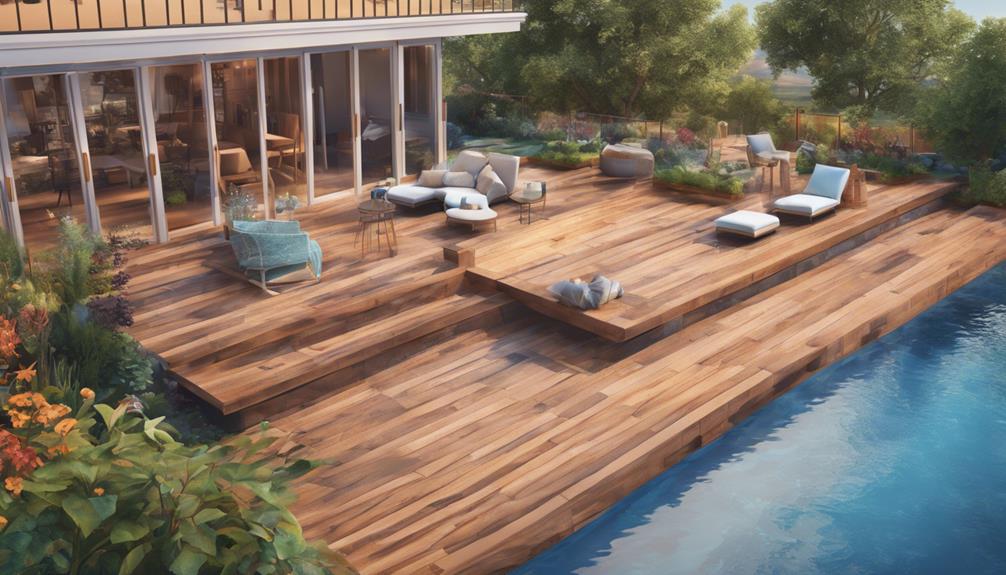
Exploring the advantages of custom deck design software reveals a multitude of benefits including enhanced design flexibility, which allows users to tailor every aspect of their deck project to their unique preferences. By leveraging state-of-the-art tools, users can guarantee that their outdoor space seamlessly integrates with their landscape, resulting in a harmonious outdoor living space that blends aesthetic elegance with functionality.
Coupled with time-saving tools, these platforms streamline the design process, enabling efficient project completion without compromising on quality. Additionally, a user-friendly interface paired with cost-effective solutions confirms accessibility and affordability, making it an ideal choice for both amateur designers and seasoned professionals.
Enhanced Design Flexibility
With the advent of advanced custom deck design software, designers now enjoy unprecedented flexibility in their creative processes. This innovation allows for a more tailored approach to deck design, accommodating varied preferences and spatial considerations. The software empowers users to explore an extensive array of design possibilities, enabling them to conceptualize complex structures and configurations with greater ease and precision. The allowance for creative maneuvering in this regard is essential, as it elevates the design from mere functionality to an architecturally expressive artform, meeting both aesthetic and practical needs.
Key aspects of enhanced design flexibility include:
- Customization Options: Users can adjust dimensions, materials, and colors, ensuring the deck reflects personal style and integrates seamlessly with its surrounding environment.
- 3D Visualization: Offering real-time changes, these tools allow users to walk through designs virtually, offering an all-encompassing understanding of the layout and spatial dynamics.
- Integration with Landscaping Elements: The software permits the incorporation of additional features, such as planters and lighting, blending the deck harmoniously within the broader architectural context.
- Dynamic Design Alterations: Modifications can be made at any stage without starting from scratch, thereby testing multiple scenarios and fitting the evolving vision of the designer.
Such flexibility has transformed how individuals approach the conceptualization and execution of deck projects.
Time-Saving Tools
Utilizing advanced deck design software is revolutionizing how efficiently projects are completed by incorporating an impressive array of time-saving tools. These tools are meticulously engineered to streamline complex processes, enabling users to focus on creativity without the burden of logistical hurdles.
At the forefront of these technological innovations is the automation of repetitive tasks, such as calculating dimensions, generating bill of materials, and providing detailed cost estimates. Such automated processes drastically reduce the time spent on preparation, allowing designers to allocate their resources more effectively towards developing bespoke deck designs.
Furthermore, these software solutions often include extensive libraries of pre-defined design templates and components, which can be swiftly adapted or customized to meet specific project requirements. This wealth of templates guarantees that even intricate design concepts can be realized more expeditiously, thereby speeding up the overall design timeline.
Additionally, cohesive integration with various external programs and platforms facilitates seamless data transfer, minimizing the potential for errors. This integration ascertains that all project-related information, from conceptual sketches to final blueprints, is readily accessible, thereby streamlining the design workflow. Collectively, these time-saving tools empower designers to bring their visions to fruition with unprecedented speed and accuracy.
User-Friendly Interface
Capitalizing on the efficiency afforded by advanced time-saving tools, the significance of a user-friendly interface in deck design software becomes paramount. An intuitive interface bridges the gap between sophisticated functionality and seamless user experience, guaranteeing that even the most complex design tools are accessible to professionals and novices alike. As users navigate the software, a well-designed interface minimizes the learning curve, accelerating project planning and design execution.
But what distinguishes exceptional user-friendly interfaces?
- Intuitive Navigation: Guarantees users can effortlessly locate tools and features, enhancing workflow efficiency.
- Customization Options: Allows for tailored user experiences by adapting to individual design preferences and project needs.
- Responsive Design Elements: Make the user experience fluid and adaptable across various devices and screen sizes.
- Clear Visual Feedback: Provides immediate insight into actions taken, reducing errors and building user confidence.
These elements collectively empower users, considerably enhancing productivity and satisfaction during the design process. The overarching goal remains clear: simplify the journey from creative vision to finished deck design. By prioritizing these features, deck design software can meet the practical needs of diverse users, catering to those who seek efficiency without sacrificing quality or creativity. Through careful attention to interface design, this software stands poised to deliver excellence.
Cost-Effective Solutions
Budget-conscious enthusiasts and professionals alike will find compelling value in cost-effective deck design software solutions. These applications not only cater to those wary of exorbitant expenditures but also deliver rich, robust features that enhance the overall design experience.
Many affordable options offer an extensive suite of tools comparable to high-end software, including 3D modeling capabilities, detailed customization options, and a library of pre-made designs. These features enable users to visualize their ideas with precision and creativity, ensuring that even at a lower price point, they do not compromise on quality.
Economic considerations do not equate to diminished functionality. Cost-effective software frequently provides seamless integration with other platforms, facilitating a coherent workflow across various stages of project development. In addition, many of these solutions are available with flexible pricing structures such as one-time purchases or subscription-based models, providing financial flexibility to align with diverse budgets.
Some providers also offer trial periods or limited free versions, allowing potential users to evaluate the software's capacity and adaptability before making a commitment. Essentially, affordable deck design software merges thrift with sophistication, empowering users to commence their creative ventures without the burden of financial constraints.
D Visualization Capabilities
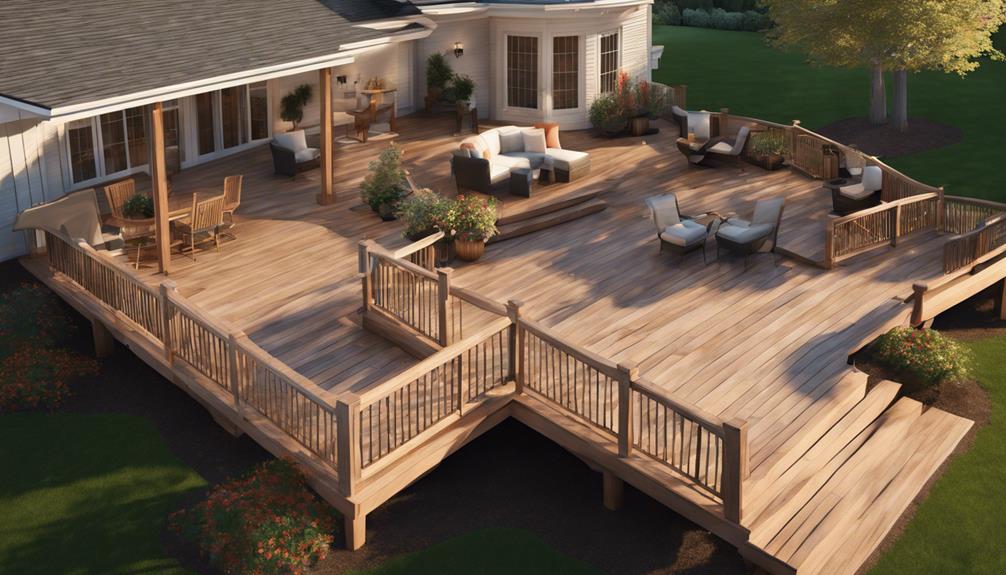
In the domain of custom deck design software, 3D visualization capabilities stand as a cornerstone for providing users with an immersive, interactive experience that enhances decision-making. These tools offer realistic design renderings and detailed material selection, enabling users to visualize every aspect of their project before construction begins. To better understand these features, the following table outlines key elements of 3D visualization:
| Feature | Description |
|---|---|
| Realistic Design Renderings | Photorealistic images that reflect actual design |
| Interactive User Experience | Dynamic interfaces for engaging design updates |
| Detailed Material Selection | Extensive options showcasing material types |
| Real-time Adjustments | Instant modifications to design elements |
| Cost Estimation Tools | Budget insights based on selected materials |
Realistic Design Renderings
A multitude of custom deck design software options now boast advanced 3D visualization capabilities, providing users with realistic design renderings that bring their concepts to life. This technological advancement enables designers to manipulate, explore, and refine their ideas in a highly dynamic visual environment, effectively bridging the gap between imagination and reality.
Realistic renderings engage users by illustrating how different materials, textures, and elements will interact in their designs, offering an extensive preview before any physical construction.
The following are key aspects that enrich the realism in deck design software:
- Photorealistic Textures: High-resolution textures replicate the natural appearance of wood, stone, and other materials, allowing users to see how these elements will look under various lighting conditions.
- Adjustable Lighting Effects: Software allows for changes in lighting, effectively simulating different times of day and weather conditions to evaluate a deck's ambiance and functionality.
- Material Customization: Users can adjust material properties such as color, glossiness, and finishes, providing a wide array of personalization options.
- Perspective Realism: Dynamic perspective viewing ensures that users can explore their designs from multiple angles, providing immersive virtual walkthroughs to assess spatial configurations and design nuances.
These features empower designers to make informed decisions, drastically enhancing the design process and outcome.
Interactive User Experience
Following the advancements in realistic design renderings, the interactive user experience has become a significant focus of custom deck design software through enhanced 3D visualization capabilities. This evolution enables users to craft an immersive representation of their envisioned outdoor spaces, fostering a deeper engagement with the design process.
In modern software applications, these capabilities facilitate a seamless migration from abstract ideas to tangible, virtual environments. With high-resolution 3D renderings, users can manipulate deck layouts, experiment with dimensions and configurations, and assess how different design elements interact in realistic simulations.
The principal advantage lies in the ability to navigate a virtual model that mirrors the physical environment where the deck will exist. Such software often incorporates navigational tools that allow users to view designs from various angles and perspectives, emulating the spatial reality one would experience on-site. This feature serves as a critical component in decision-making, helping users visualize potential design flaws and make real-time modifications.
Additionally, the interactive aspects often include lighting adjustments, shadow effects, and even the integration of surrounding landscapes, ensuring users have a holistic view of their project's potential outcome, enhancing satisfaction and reducing miscommunication.
Detailed Material Selection
Building upon interactive user experience, detailed material selection in custom deck design software offers users an unprecedented level of control over the aesthetic and functional elements of their projects. The sophistication of these programs extends beyond simplicity, providing an array of materials, textures, and colors that can be meticulously tailored to meet design aspirations.
By integrating such tools, users can visualize the interplay of materials in real-time, greatly reducing the guesswork involved in choosing the right options for their decks. This feature guarantees the design outcome aligns with personal taste and structural requirements, marrying form with functionality seamlessly.
Aided by advanced 3D visualization capabilities, the software allows users to preview materials under various lighting conditions and from different perspectives. This enhances decision-making with:
- Color and Texture Customization: Users can experiment with different shades and textures, simulating a myriad of finishes.
- Material Library Expansion: Access an exhaustive library featuring wood, composite, and numerous alternative materials.
- Cost Estimation Tools: Obtain accurate predictions of cost implications based on selected materials, assisting budget management.
- Environmental Compatibility Insights: Understand the sustainability and environmental footprint of material choices, aligning with eco-conscious practices.
These tools coalesce to form a holistic approach to deck design, elevating projects from conception to completion.
Decks FAQ
What Are the System Requirements for Custom Deck Design Software?
To fully utilize custom deck design software, users generally require a computer with at least 4GB of RAM, a modern multi-core processor, a dedicated graphics card, and a recent operating system like Windows 10 or macOS Mojave.
Is Cloud-Based Storage Available for Design Projects?
Yes, numerous custom deck design software solutions offer cloud-based storage options. This feature enables users to save designs remotely, facilitates easy collaboration, and guarantees consistent access across multiple devices, thereby enhancing the overall design management process.
Can Designs Be Shared With Contractors or Clients Easily?
Yes, software solutions often include features for seamless design sharing with contractors or clients. This functionality typically involves generating shareable links or exporting projects in universal formats, enhancing collaboration and efficiency within design-driven workflows.
Are There Options for Importing Existing House Plans?
Addressing the integration needs, many deck design software solutions offer functionality to import existing house plans. This feature facilitates seamless design alterations, ensuring that new deck layouts complement existing architectural structures effectively. Compatibility varies with different software platforms.
How Often Is the Software Updated With New Features?
The frequency of software updates varies by developer. Typically, updates with new features are released quarterly or semi-annually. It is advisable to check the software's official website or contact customer support for specific update schedules.


